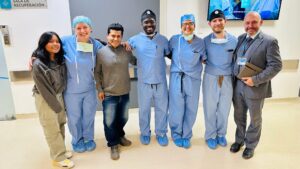This study focuses on a systematic approach to minimizing blood transfusions during acute type A aortic dissection (ATAAD) surgeries, addressing the risks and shortages associated with transfusions. The research spanned from August 2016 to June 2020, involving 326 patients. It applied advanced surgical techniques, including Liu’s aortic root repair and aortic arch inclusion methods with frozen elephant trunk, moderate-to-mild hypothermia circulatory arrest, and a centrifugal pump in the cardiopulmonary bypass (CPB) circuit.
Patients were divided into transfusion (152) and transfusion-free (174) groups. Transfusion-free patients had significantly lower in-hospital mortality (1.72% vs. 9.21%) and reduced rates of complications, such as multiple organ dysfunction syndrome (MODS) and respiratory issues. Intraoperative innovations like fewer anastomosis sites, internal reinforcement of the aortic root, and modified hypothermia protocols minimized bleeding and coagulation issues, crucial for reducing transfusion needs.
Key factors enabling this outcome included careful management of preoperative anemia and malperfusion, restrictive transfusion thresholds tailored by patient age and complications, and a collaborative surgical team adhering to transfusion-free protocols. Mechanical ventilation times, ICU stays, and postoperative complications were also reduced among transfusion-free patients.
The study highlights that transfusion-free ATAAD surgery is feasible with meticulous surgical techniques, optimal CPB management, and adherence to restrictive transfusion strategies. The findings suggest this approach is both safe and beneficial in selected patients, potentially setting a new standard for managing ATAAD surgeries.







